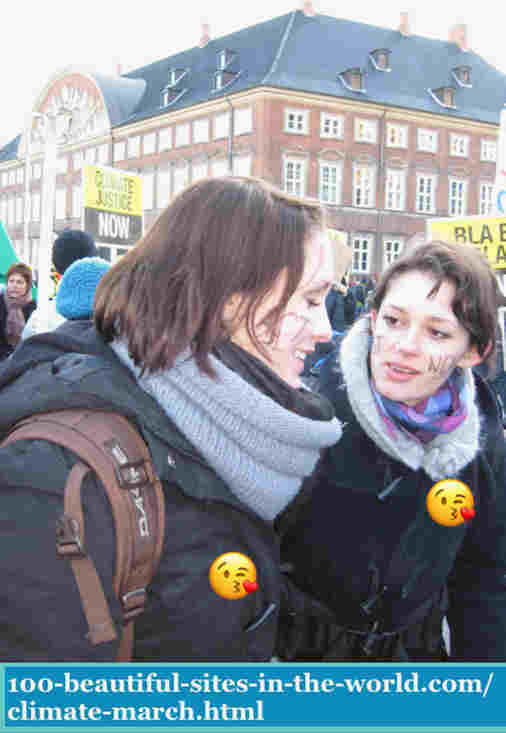Siberia's Modern Cities Bloom!
Emerging from hard times in the past, Siberia blooms because of huge network of roads and railways and oil and gas productions. However, climate change threatens the entire infrastructure in Siberia's industrial cities.
The region has experienced economical growth that led to prosperity through decades in the last two centuries. There was no fear of the future and no one has expected the recent climate change to be real at the time the industrial infrastructure was built on the permafrost in the area.
The following article is about this region and the recent climate threats it faces, which could result in complete damages to all that the authorities have built through the long years of hard work.
If you have more information about this topic, or perhaps if you have any solutions to control any projected loss, please use the form at the bottom of the page and write it. I have some useful presents for you for just doing this. Thanks.
Siberia is the only huge region in the entire great Union of Soviet Socialist Republic (USSR) before the collapse of the republic in 1991 and, well -- Russia nowadays.
This huge region stretches east from the Urals Mountains up to the strait between the Pacific Ocean and the Arctic Ocean and covers nearly 10% of the Earth's land surface. That area is 13.1 million square kilometres.
However, most of the areas of the entire huge region remained unexplored until the construction of the Trans-Siberian Railway Network between 1891 and 1916.
It is well known that in the hard times of the Russian history some political events took place here in Siberia's harsh arctic and sub arctic climate.
During long periods of time, the area was inhabited only by exiled prisoners from western Russia in addition to very small numbers of explorers and traders.
In the Stalin era, the Gulag labour camps were prepared for deportation of prisoners who were either petty criminals or political enemies of the state.
The numbers of those exiled prisoners reached alarming heights during Stalin's hard time. At least 14 million people, including all nationalities were deported to the Gulag camps between 1929 and 1953.
In addition to removing unwanted political or criminal elements from many cities in Russia, the authorities arranged the Gulag camps to be quite convenient environment for labours to work in the mines in the isolated Siberian-plateau, which is rich in natural resources like oil, natural gas, coal, lead, gold and diamonds.
Today, some of the Gulag camps became major industrial cities such as Norilsk, Vorkuta and Magadan in the far eastern Kolyma region. However, today's Siberia is still sparsely populated, with a density of only three inhabitants per square kilometre.
Recently, around 36 million people live in the region. People living in the Siberian cities could be heading towards new troubled times.
Several sites such as the Siberian oil and gas compounds, pipelines, roads and railways networks were all constructed on the top of the permafrost.
In Yakutsk, a city that known as the world's largest permafrost-city, everything from apartments to hospitals and factories were built on the top of a foundation of wooden poles that are hammered into the permafrost.
It is projected that the permafrost areas in the northern hemisphere will probably shrunk by 20% to 35% in the coming forty years because of the global warming.
Thawing of the permafrost under the mentioned facilities can lead to leaks in oil and gas facilities and cause extensive damages to the infrastructure in the northern Siberian regions.
The thawed permafrost already weakens some buildings in some parts of the region. It is projected that the entire cities with all the economical facilities will be lost by 2030, if the rate of thawing in the permafrost continues.
Useful Resources:
A Cultural History (Landscapes of the Imagination)
Before Russians crossed the Urals Mountains in the sixteenth century to settle their "colony" in North Asia, they heard rumors about bountiful fur, of bizarre people without eyes who ate by shrugging their shoulders and of a land where trees exploded from cold. This region of frozen tundra, endless forest, and humming steppe between the Urals and the Pacific Ocean was a vast, strange, and frightening paradise. It was Siberia.
Between Heaven and Hell: The Myth of Siberia in Russian Culture
In addition to this specific topic about the region, I have some pages on this website about other topics in Russia you can link to them on Altai Mountains, Bering Sea, Lake Baikal and Yamal Peninsula.
I appreciate your comment on this page. You can also use the form below to write about Siberia or any beautiful site in Russia. It is good idea to leave your email address so you can receive replies to your comments from visitors like you.
PLEASE BE ASSURED, no one of the commentators will capture your email address. It is only that the system that will send you notifications about replies to your comments, as this process is automated. Thanks to SBI 2.0 for offering the Web 2.0 strong tools and making nice visitors like you comment and share throughout the Web 2.0.
I have some gifts for you too for sharing your words about any beautiful places in Russia and the affects of global warming on them. Thanks.
Have A Great Story About Some Beautiful Sites in the World?
Do you have a great story about any beautiful site in the world? Share it!
You can also enjoy more activities here indeed if you liked this page about Siberia.
Please share it with your services through the buttons here, at the left column of the page and at the bottom of the page.
This could be also additional value to you, as you could experience some social networking technologies and know more. Click on "Enjoy this page? Please pay it forward" at the bottom to know how to link to the website.
I use "Solo Build It" tools at the bar below to empower this page and the entire 100 Beautiful Sites in the World. Thanks to those strong website building and optimizing tools.
100 Beautiful Sites in the World| 100 Beautiful Sites Blog| 100 Beautiful Sights| About Us| Beautiful Site Map| Beautiful Scene Newsletter| Contact Beautiful Sites| Any Beautiful City| Forward 100 Beautiful Cities| User Interface| 350| Aarhus| Aegean Sea| Amazon Rainforest| Amman| Archipelago Sea| Arctic Ocean| Battery| Bayan Olgii| Bay of Plenty| Beautiful Hotels in Orebro| Beautiful Orebro City| Beijing| Big Sur| Boreal Forest| Borneo| Cape Floral Region| Caracas| Caribbean Sea Turtles| Chacaltaya| Chicago| Climate Demonstration| Climate March| Congo River Basin| Copenhagen| Copenhagen Climate Change| Copenhagen Climate Demonstration| County Meath| Dalarna| Franz Josef Glacier| Ganges Delta| Gondar| Great Barrier Reef| Gujarat| Herschel Island| Hudson Bay| Ilulissat| Indus River| Kakadu| Kalahari Desert| Kauai| Kilimanjaro| Komodo Island| Kordofan| Lake Chad| Lilongwe| Madagascar| Mergui Archipelago| Mississippi River| Monteverde Cloud Forest| Naukluft Park| Niger Delta| North Slope| Norwegian Tundra| Nunavut| Nuwara Eliya| Okavango Delta| Olympia| Orebro Castle| Panama Canal| Paris| Perth| Quelccaya Ice Cap| Recife| Rio de la Plata| Ross Ice Shelf| Rotterdam| Rub al-Khali| Sagarmatha National Park| Saint Louis| Serengeti| Siberia| Solomon Islands| Sulu Sulawesi Sea| Thames| Tian Shan| Timbuktu| Tokyo| Trinidad| Tuvalu| Upper Po Valley| Valdes Peninsula| Vavau| Yangtze River| Zahara de la Sierra|

